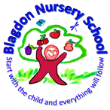- Reading Early Years Schools Federation
- Home
- About Us
- Our Classes
- Orchard - Early Years Specialist Centre for High Needs
Orchard - Early Years Specialist Centre for High Needs
The Orchard resource here at Blagdon Nursery School caters for children who require specialist provision to meet their special educational needs. This is for children who will require a high level of support involving 1:1 or 1:2 adult support.
Children will be considered for a placement where they will benefit from a combination of: speech and language therapy; a low arousal environment; a personalised sensory diet and supported access to a differentiated curriculum requiring specialist provision.
Children who are based at the Maintained Nursery School that the specialist setting is attached to (Blagdon) will not automatically be prioritised for a placement in the specialist centre. Children from across Reading Borough Council will be considered equally for a placement based on needs.
Children considered for admission to the specialist centres will:
- Have Social Communication Difficulties/Autism, Sensory Processing or learning needs as their primary need.
- Not have Profound and Multiple Learning Difficulties (PMLD) as their primary need.
- Not have physical disabilities as their primary need.
- Not have Hearing Impairment/Visual Impairment/MultiSensory Impairment as their primary need.
The panel will consider admissions requests based on the child’s needs and circumstances; the current cohort of children attending the centre and whether the admission of a new child will still ensure that all children attending the setting are supported to meet their educational needs.
Children identified for application to the specialist setting will usually be known to support services e.g. Portage & Educational Psychologist Service, Early Years SEND Advisory Service & Speech and Language therapists and their views will be sought in considering the admission request.
Before an admission request is brought to panel, the family will be invited into the setting for a show-round and initial assessment visit where staff from the setting will meet with parents/carers and observe the child to gather information to assist in the panel in their consideration of whether the specialist centre is an appropriate placement.
The progress of children in the specialist centre will be reviewed. The review will consider whether the Early Years Specialist Centre is effective in meeting the child’s needs or whether any of the exit criteria have been met.
Admissions Indicators
The indicators that the admissions panel will be taking into consideration when deciding if a placement at the Early Years Specialist Centre is suitable for a child will include:
- Child is finding it challenging to access a mainstream curriculum.
- Need support from familiar keyperson to engage in the fundamentals of communication e.g.
- giving and sharing attention with another person
- taking turns in exchange of behaviours
- understanding and using eye contact, facial expressions, nonverbal gestures and use of physical contacts.
- Learning how to use vocalisations and understanding variations and meanin
- Shows signs of anxiety about what is expected of them; requiring visual cues and adult support to follow the routine and follow simple step instructions.
- Needs support to understand social cues when interacting for social purposes with peers/adults.
- Requires sensory support to manage the day to day routines and may demonstrate sensory seeking or sensory avoidance behaviours
- Needs support to engage in joint attention on an individual or small group basis
- Child’s play needs support from an adult for child to participate, and child needs support to move to another activity.
Transition to mainstream classroom/Exit Criteria indicators
Please refer to the SLA Admissions arrangements (Appendix B) for further information about when a change of placement may be considered.
The list below are indicators for when an Early Years Child within the specialist centre Base has made progress and could have their needs met in a mainstream early year setting with appropriate support.
Communication
- Shows communicative behaviour to request using a range of means (verbal, symbols, actions) to express some wants/needs
- Aware of objects/visual cues and that they carry meaning.
- Approaches familiar person to communicate.
- Follows simple instructions with visual support.
- Starting to use speech for a range of functions- greetings/ requests/ choices/ comments, especially in small group situations.
Social Interaction and play
- Shows motivation to interact with others and can engage in social cues with support e.g. waiting for a turn; responding during a gap in conversation in small group situations.
- Able to engage in shared attention group activity with key adults
- Can wait a turn in a structured small group with adult support.
- Demonstrates use of functional visual communication gestures/eye contact in appropriate situations.
Routines
- Able to adapt to a familiar environment with visual prompt and adult support.
- Able to change activity with appropriate visual support such as a now/next board.
- May use a visual support system or cues to access and complete activities or sequences
- Demonstrate some awareness of needs and will make these needs known in a consistent manner.
Sensory Regulation
- Able to engage in a programme of sensory support including calming techniques and movement breaks e.g. Accept physical comfort from familiar caregiver; soothed by touch; comforted by familiar items;
- Able to show engagement with support to focus and manage sensory experiences in the background environment.
